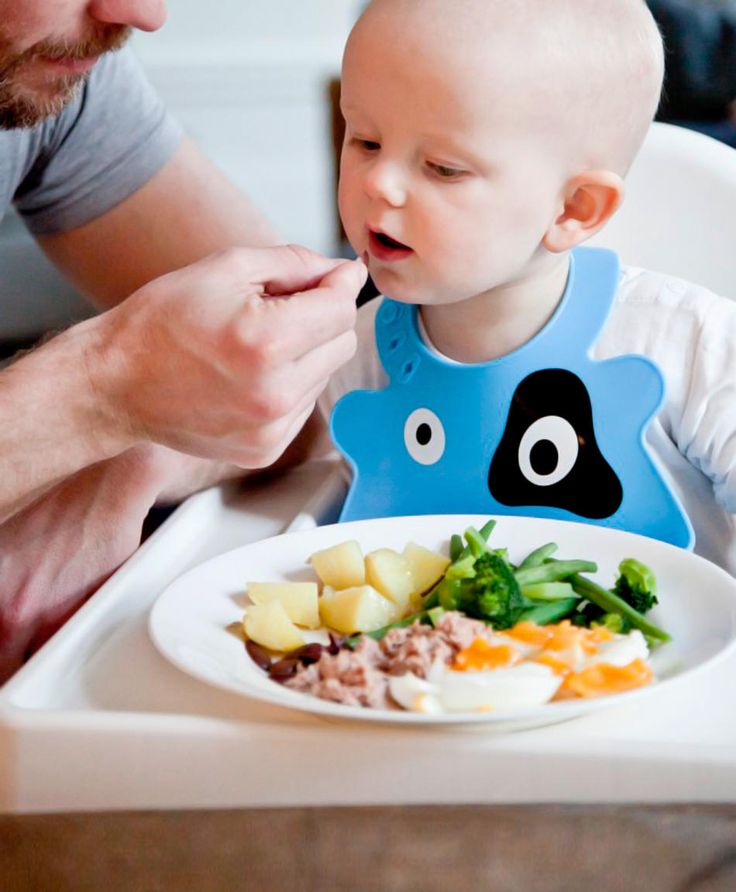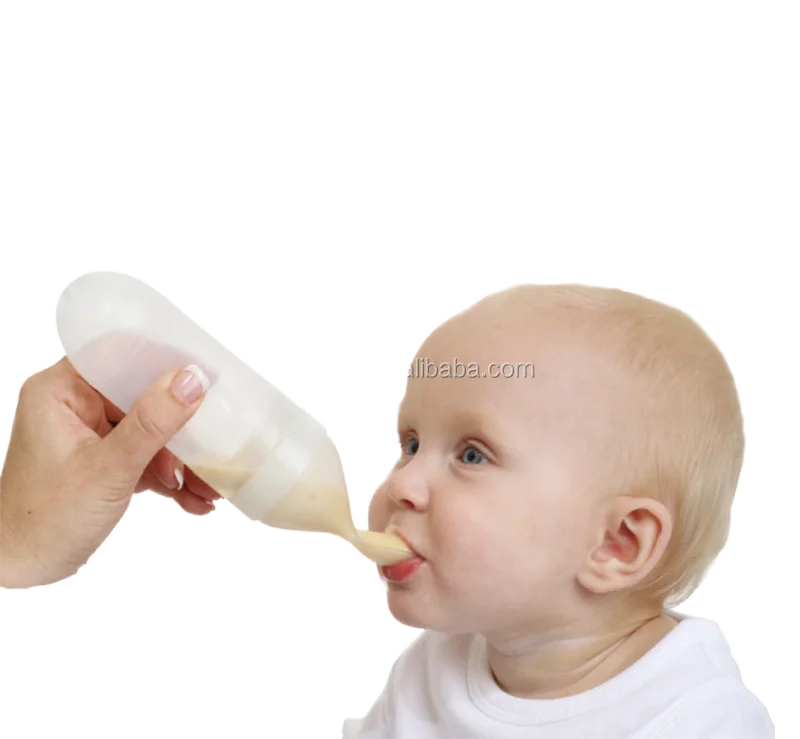Baby food pouches vs homemade
Your Baby’s Food: Homemade or Store Bought?
Making your own baby food is a very personal decision many mothers think about. It is not always an easy choice because there are a lot of factors such as lifestyle, cost, benefits and risks that go into it. As my best friend put it,
“There is something really gratifying and pure about making Henri’s food. Since it is made by me, I know exactly what goes in his tummy. And of course, I have to taste it, making me more aware of the flavors my child does and does not like.”
What is Most Important: Experts Weigh In
According to the United States Department of Agriculture (USDA), the most important concern surrounding the decision of what to feed your child is to provide an “adequate amount of essential nutrients by consuming appropriate quantities and types of food.”
Essential Nutrients for Babies
Some important essential nutrients for your baby include protein, healthy fats, iron, vitamins D, A and B12. As long as your child receives important nutrients, whether it’s from homemade baby food or store bought, you are providing your baby with the building blocks for their future growth and development. I found this guide from USDA.gov helpful in learning about the nutritional needs of my baby. I think you will to!
Year One
Many of you may be breastfeeding. The American Academy of Pediatrics (AAP) recommends exclusive breastfeeding for the first six months of age. During this time, the sole form of nutrition should be breast milk. After six months of age, complimentary foods may be introduced into your baby’s diet. This may be in the form of rice, cereal, vegetables and fruit. These are some of many nutrient based complimentary foods AAP recommends in your baby’s diet.
When your baby is at least six months and ready to begin eating solid food, your question may be, “Should I make my own baby food or buy it from the store?” The rest of this blog post helps answer your question!
Should You Consider Making Your Baby’s Own Food?
The benefit of making your own baby food is knowing exactly what your baby is eating with no worry of extra “surprise” ingredients. Here are tips to consider when making your own baby food:
Here are tips to consider when making your own baby food:
- ALWAYS follow strict food safety rules for preparing and storing homemade baby foods. Refer to this easy guide from FoodSafety.gov for details on baby food preparation and storing safety.
- Wash fresh produce thoroughly.
- Use fresh fruits and vegetables as much as possible. Prepare fresh produce shortly after purchasing in order to preserve the nutrients.
- Remove peels, cores and seeds in any produce.
- Remove skin and trim all visible fat from meats.
- Cook meats by baking, broiling or stewing.
- For younger infants, puree meat in a blender to desired consistency by adding a small amount of fluid. For older infants, chop meat and poultry into very small pieces.
- Avoid using canned fruits and vegetables with added salt or sugar.
- Serve food plain. Do NOT add seasoning and spices to your baby’s food.
- To adjust flavors add other pureed foods that your baby has already eaten.

- Never incorporate foods that your child has never eaten. There may be a food allergy you are not aware of.
- Introduce new foods one at a time in order to make sure there is no food allergy connected with a particular food.
- Avoid adding eggs or dairy before age one. Dairy and eggs at such a young age can cause a food allergy.
- Homemade food kept in the refrigerator should be eaten within 48 hours after preparing.
- If you are making large batches, freeze in BPA-free containers with proper lids. Label and date all containers.
Are There Ingredients to Avoid in Store Bought Baby Food?
Actually, no there is not. In my research for this post, there aren’t ingredients to avoid in store bought baby food, but there are additives to avoid. Make sure there is no corn syrup and sugars added. Generally, baby food has fewer additives that other food. Purchase foods that have only fruits and/or vegetables and water added. Many families lean towards organic brands because they know the food is free of pesticides, growth hormones, antibiotics and other chemicals. If the cost of organic brands is too high, read the labels and make sure there are no additives like corn syrup, sugars or other ingredients that are not real food or food-based.
If the cost of organic brands is too high, read the labels and make sure there are no additives like corn syrup, sugars or other ingredients that are not real food or food-based.
There are Benefits to Store Bought Baby Food
The biggest benefit is convenience! I cannot say it enough. It requires less careful preparation and cleaning, less pureeing, less freezing and less waste. Baby food manufacturers are constantly creating new products, which allows for easier and lighter carrying. Companies have started packaging their foods in pouches, which are easier to carry than glass jars. Also, many companies package their baby foods in ways that are designed to help parents advance their baby’s diet at the right age.
At the end of the day, the decision to make your own baby food or buy food for your baby is a decision that needs to fit into your lifestyle. As long as you are providing your child with a healthy well-rounded diet, you really cannot go wrong.
Must-Know Pros & Cons of Using Baby Food Pouches
As a parent, you have to weigh out baby food pouches vs. jars when it’s time to feed your baby or toddler, but there’s some pros and cons to both that you’ve got to be aware of first!
Her text read: Is it okay for Marin to eat baby food pouches? She eats them a lot!
My dear friend was asking about her 8 month old, first-born daughter. I smiled to myself as I typed in my answer, because there was a lot I had to say as a feeding therapist about the popular and uber convenient baby food pouches that are now a way of life for most parents of young kiddos.
But, the answer to my friend’s question wasn’t a quick reply, in fact, I told her we’d talk about it in a few days when I saw her, because there’s some dangerous pitfalls to using baby food pouches all the time.
And yet, they have some benefits over jarred baby food, besides the obvious less-mess factor, which I don’t count (more on that in a minute).
So, let me give you my list of pros and cons of baby food pouches, and at the end, I’ll reveal the baby food vehicle that’s the ultimate winner in this show down of pouches vs. jarred food!
Affiliate links used below. See our full disclosure.
Are We on the Same Page About Baby Food Pouches?
Just to be 100% clear, a baby food pouch is a bag, instead of a jar, that has a straw like spout on the top. They were first introduced in 2008 by Plum Organics, and were a massive success because they were portable and easy to dispense baby food out of. I’m not sure if the company intended babies to suck straight out of the pouches or not, but that is how many babies and toddlers eat them.
This is an example of one, and you can find them everywhere from Amazon to gas stations.
These pouches are also popular in the picky eater crowd! It’s common for toddlers to get stuck on these foods and not give them up. Parents continue to give the pouches even at older ages because it may be the only type of food their child eats, or the only fruits and vegetables in their diet.
Parents continue to give the pouches even at older ages because it may be the only type of food their child eats, or the only fruits and vegetables in their diet.
Of course, it didn’t take long for every other baby food company to also begin selling baby food pouches. Today, you can even buy your own reusable pouch, like this one, which is perfect for parents that want to make homemade baby food and kids that are hooked on pouches.
The Pros of Baby Food Pouches vs. Jars
The baby food pouch offers several winning factors over traditional jarred baby food.
# 1: Sucking thick baby food through a little straw develops stronger muscles in and around the mouth that are needed for eating! Most of us take for granted the complicated coordination and strength that eating requires. But eating is a skill too, and sucking from a straw, which doctors don’t expect babies to do until at least 9 months old, is something that can improve how a child eats.
These skills are also known as oral motor skills.
# 2: They encourage independence, another skill that occupational therapists like myself, focus on. With a pouch, a baby can feed themself at a very early age, sometimes as early as 6 months. That sense of independence may help them make other independent decisions with food in the coming months.
It’s highly unlikely that a baby will be able to spoon feed themselves much before their first birthday, and it could take them until 18-24 months before they’re doing it well.
# 3: Baby food pouches are fun for kids, and combined with the fact that they can feed themselves, I suspect it’s why we see some kids not wanting to give them up. Recently, my 8 year old couldn’t wait to get his hands on an applesauce pouch from a friend. He sucked it down in a second and was looking for more, even though he eats applesauce just fine from a bowl.
Having a cute little pouch to slurp down quickly is way more fun.
# 4: There is no denying that baby food pouches are incredibly convenient. They slide right into a purse or a diaper bag, and whether you squeeze some out onto a spoon first or just hand the whole thing to your child, the mess is much less. That can be super helpful while you’re at your 5 years old soccer game and need to squeeze a meal in for your toddler that won’t sit still!
Cons of Baby Food Pouches
There are a couple of big cons of using baby food pouches on a regular basis that I’ve seen have a negative impact on a child’s future eating. Basically, I’ve seen baby food pouches play a major role in a child developing into an extreme picky eater, or making it worse.
# 1: Baby food pouches don’t allow any mess. I know that seems great on the surface. But, babies and toddlers getting messy eating is what was meant to happen. As they touch, explore, and play in different textures of food, their brain is learning how to interpret and accept those textures. For some babies and toddlers that never touch their food or get messy, they can become extremely sensitive to new textures and that means they’ll only eat a few things.
For some babies and toddlers that never touch their food or get messy, they can become extremely sensitive to new textures and that means they’ll only eat a few things.
Think about the picky eater that only eats crunchy foods, that’s just one example.
But, many times, babies and toddlers are drawn to the pouch because they already have a sensory sensitivity, that is part of their genetic makeup. And, it’s quite common as far as feeding challenges go.
Don’t make the mistake of thinking there’s nothing that can be done about such a sensitivity though. The more a child touches any type of texture, the better their brain will adapt. When a child is only given the pouch, their brain may not have a chance to grow in that way.
# 2: Children that use baby food pouches for most or all meals may develop an aversion to a spoon coming towards their face. For some, the feeling of the metal is overwhelming and they’ll shudder and turn away. For other kids, they haven’t learned how to receive a spoon. They literally don’t know what to do. And, they could begin to resist and become fearful of the spoon.
For other kids, they haven’t learned how to receive a spoon. They literally don’t know what to do. And, they could begin to resist and become fearful of the spoon.
Obviously, this makes it difficult to teach them to eat new and different foods.
# 3: It’s easy to fall into relying on the pouches and skip offering them table foods. Some kids might not seem interested, but the pouch or even jarred baby food can give a sense of security because they’re still eating.
But, there’s a critical window of time when babies learn to chew instinctively between 8 and 11 months old. It can be taught after 11 months, but it does require some specific strategies and help to get them there. You can learn more about what to avoid when teaching your child to eat table foods in this free workshop.
# 4: Baby food pouches can get punctured inside of a bag, which can make quite a mess. Or, if a pouch does get a small hole and you don’t notice, mold could develop inside. Make sure you always do a quick inspection of the bag before feeding it to your child!
Make sure you always do a quick inspection of the bag before feeding it to your child!
The Winner of the Baby Food Pouch vs. Jar Show Down?
Drum roll please….
The winner is…
Both! I believe the best way to support your child’s feeding development, and hopefully avoid extreme picky eating, is to use a combination of both pouches and jarred or homemade baby food they’re fed from a jar.
Actually, you can use just pouches, but for at least 50% of the meals, squeeze all the food from the pouches into a bowl so your child can be fed from a spoon. Even better is using some homemade baby food, make sure it’s totally smooth without any chunks in it.
Even better still is to give your child a little bit of the baby food in their own bowl, with their own spoon (these are my favorite for babies/toddlers/preschoolers)
That way, if they dump or throw it, not a lot is wasted. With this set up, they can practice feeding themselves and are sure to get messy! If you need more convincing on embracing the mess, head to Why Babies Need to Get Messy.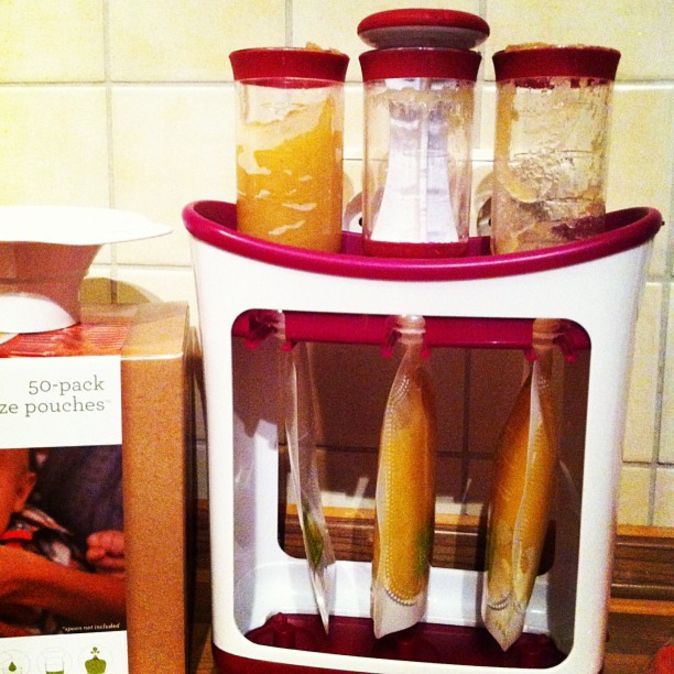
What do you think? Are you going to use pouches, jars, or both? Tell me in the comments below or pass this onto a friend that may need some guidance. It’s such a common question!
Free Printable Toddler Food Printable
Is your child getting ready for table foods? Or, maybe you’ve already started? Then click below to get my free toddler food printable list. It’s pages full of meal ideas and foods that are perfect for toddlers and older babies!
Click here for the Toddler Food Printable
More on Babies and Toddlers Eating
What to Do When Baby Won’t Eat Solids: 7 Simple Steps
Mega List of First Finger Foods
How Much Milk Should a Toddler Drink
Toddler Feeding Schedule
Alisha Grogan is a licensed occupational therapist and founder of Your Kid’s Table. She has over 14 years experience with expertise in sensory processing and feeding development in babies, toddlers, and children. Alisha also has 3 boys of her own at home. Learn more about her here.
Alisha also has 3 boys of her own at home. Learn more about her here.
Happy Baby reusable pouches Bags for storing baby food - “Save on pouches, take them with you on the road, tell you how to sterilize and care! + ideas where else you can use these pouches”
time we walk, most often very far from home, naturally I take snacks for children with me, mashed potatoes in spiders are an integral part of a walk or a trip with a small child. Now there is an opportunity to save (to some extent), take care of the environment thanks to reusable bags for baby food from happy baby.
Why them?
- I arranged the price, 299₽ for 5 bags and 5 caps;
- Optimum volume 180 gr;
- Ease of use;
- Consuming smart, using a more convenient container for feeding my baby does not harm the environment and does not produce more waste.
The bags are very thoughtful in use, from filling to care. It is possible to purchase an additional nozzle in the form of a spoon, I did not buy it, because I do not see the point in it.
There is a place to sign what kind of product, for whom and date of preparation. The design is quite nice, more neutral, a convenient viewing window and a measuring scale.
Of the whole set, I actively use one bag for fruit purees and one for vegetables, after using mine as soon as possible, sterilize and dry. It can be used for cereals, vegetable purees, for self-made purees, for freezing food. For those who are afraid that the packages are not sterile enough, I suggest just taking a jar of sterilized food, this food bag, and pour everything just before use. So you will be calmer about the freshness of the product.
In the future, I plan to store berries mashed with sugar in these doypacks (first I freeze, then the reverse process and, accordingly, eating), homemade sauces, a small amount - the product will not have time to deteriorate and will be quickly eaten! The main thing is you can indulge, your own, homemade?
Many people have difficulties with washing, they don’t happen to me, everything is quite easy, it’s allowed to wash in the PM, but I do it with my hands using a bottle brush, I need the smallest one for the nipple.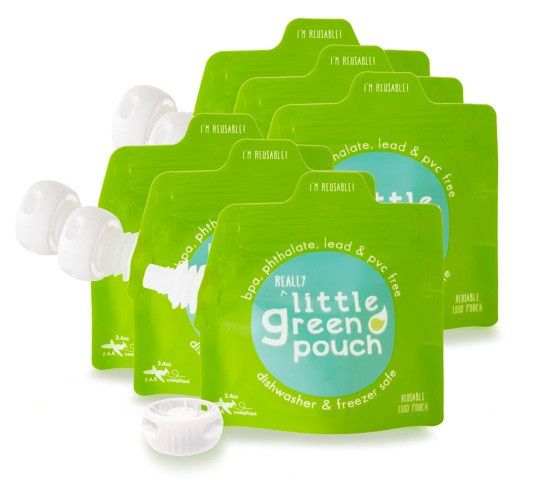 Many people think that since the ban on the use of a microwave oven means that it cannot be sterilized. I sterilize the bag in the good old "grandmother's" way - with boiling water and hot steam, then dry the bag using a bottle dryer, everything is straightened and dried out there, I douse it with steam and pour puree before use.
Many people think that since the ban on the use of a microwave oven means that it cannot be sterilized. I sterilize the bag in the good old "grandmother's" way - with boiling water and hot steam, then dry the bag using a bottle dryer, everything is straightened and dried out there, I douse it with steam and pour puree before use.
It closes quite tightly, and the lid and lock, for a month of active use, there were no embarrassments. It does not absorb odors from food, the only thing is that if you wash it with a very vigorous dish detergent, it will smell a little, but this does not affect the taste.
Putting mashed potatoes or porridge into it is quite simple, but at first you need to get used to it, the neck is quite narrow, it is not very convenient to scoop with a spoon, over time I somehow got used to pouring mashed potatoes without spilling and without a spoon. But I repeat, you need to adjust when you poured it for the first time from a spoon, wanted to spit and take a funnel?
Today I “loaded” an afternoon snack, vegetable puree to take with me for a walk. And today we don’t have cans, but all our own, made with our own hands?? It looks something like this
And today we don’t have cans, but all our own, made with our own hands?? It looks something like this
Overall, I'm very happy with the purchase of reusable baby food bags! It is incredibly convenient on the road, on a walk and helps to protect mother nature, as well as teach children to consume wisely by example.
Freezing Homemade Baby Food Encyclopedia Baby Food
Levchuk Viktoria©Levchuk Viktoria©
There are some important guidelines for freezing baby food that you need to follow, they are outlined on this page, and there is even a diagram of products that can be frozen. We will show you how to freeze freshly made puree and store it. It will be interesting to read.
Good to know!
- Frozen baby food leftovers - what to do with them, we will find out in the article.
- Heading Frozen food - all about baby food cubes.

- New thinking on allergens
Easy to use sitemap Encyclopedia Baby Food with a list of all articles and recipes.
How long do you keep baby food in the refrigerator or freezer?
Contents:
- Freezer: 4-6 months (ideally used within 1 month or 3 months)
- Refrigerator (fruit/vegetables): 24 hours
- Refrigerator (meat, poultry, fish eggs): 24 hours
For For optimum quality and nutrient retention, store Frozen Baby Food Cubes in the freezer for no more than 1-3 months.
Frozen baby food is safe to use if kept in the freezer for about 3-6 months without thawing again. However, it is more reasonable to use them in the region of 1 month to 3 months inclusive. Due to the amount of water crystals that accumulate in baby puree, and the fact that nutrients and important substances can be leached/evaporated when thawed due to these same water crystals, it is wiser to use your frozen baby food whenever possible. - no more than 3 months of storage. However, it is best to use within the first month after freezing, we advise.
- no more than 3 months of storage. However, it is best to use within the first month after freezing, we advise.
Most sources advise storing fruit and vegetables for 8 to 12 months in the freezer. This is mostly true of whole foods that are congealed in their natural state. This is also provided that the refrigerator compartment remains at a constant temperature below zero. Deep-freezing is best if you want to keep frozen food for a long time. However, it should be remembered that the instructions and recommendations for freezing food for long-term storage do not imply that the fruit or vegetable has been boiled and mashed.
How long can baby puree be kept in the refrigerator?
In the refrigerator, it is not recommended to store fresh pureed homemade baby food for more than 24 hours. This limitation ensures that the growth of pathogens in the puree is kept to a minimum and that the food does not take on the “refrigerator flavor”. This "rule" applies to vegetables, fruits, meats, etc.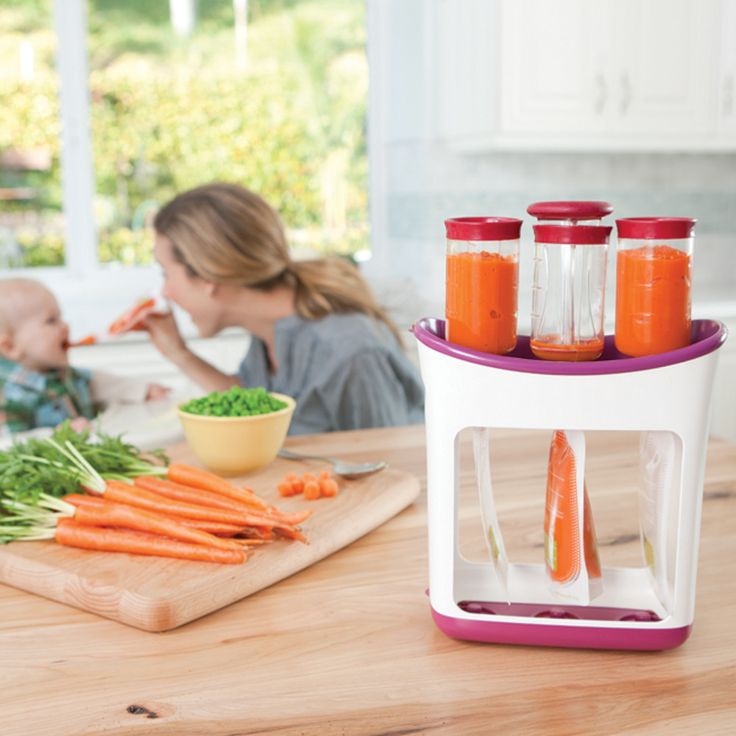
If it is not planned to freeze homemade baby food, then baby food for the baby is prepared every day if he is too small until 8-9months, or every other day, older than the specified age.
Why freeze baby food?
Save parent time, reduce food waste and ensure food safety.
For example, one potato was baked in the oven, and then half was mashed and the other half was frozen.
Frozen vegetables or fruits are safe in baby food
Fruits and vegetables can be frozen. Using frozen fruits and vegetables is the second best option after eating fresh. The quick freezing process (food is frozen at a very low temperature and very quickly) actually preserves the nutrients optimally. Cooking destroys more important nutrients than freezing food. Contrary to myth, freezing food (particularly fruits and vegetables) does not destroy 100% of minerals and vitamins. The freezing process, subject to storage conditions at a constant temperature of zero degrees, does not contribute to the complete loss of nutrients and important substances - if this is the case, then most of the population is malnourished, since in winter we eat a huge amount of frozen foods.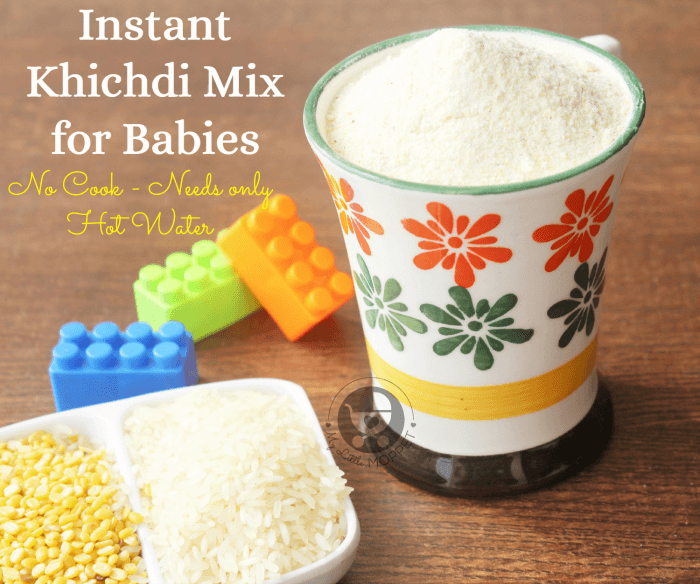
Frozen vegetables not cooked at the time of packaging must be cooked before eating. Please remember to read the labels of frozen bags, as some brands of frozen vegetables may be pre-cooked.
One of the most frequently asked questions is "Can I use frozen fruit or vegetables for baby food and then freeze the puree?". Since there are no studies that show that repeated freezing is negative and / or can negatively affect health. The problem is that it is necessary to cook food from products that have been frozen once. But the reality is that a frozen product, going through all the stages from a fresh look to a frozen product in a refrigerator in a store, can survive several defrosting and freezing, as it was written earlier, it is through water crystals that nutrients leave. Therefore, purchased frozen vegetables and fruits must be carefully selected, and we would not recommend preparing baby food from them for subsequent freezing of baby puree. It is clear that sometimes parents have no choice and have to start complementary foods with purchased frozen food, so we carefully choose the packaging and the manufacturer, without holes, without pieces of ice.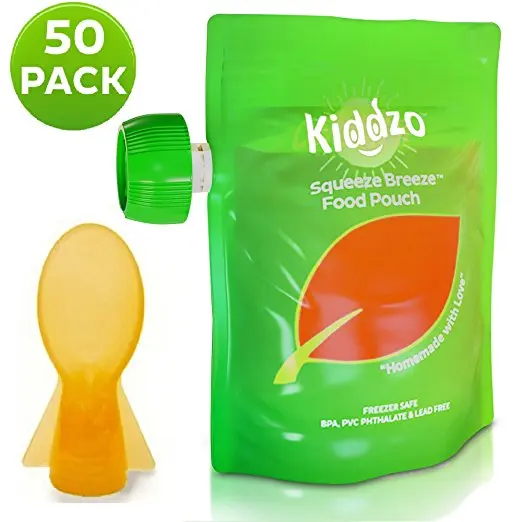
For example, from frozen vegetables (home-made or a good quality store-bought bag) that were raw when frozen, we prepare a roast, we freeze the leftovers of the roast and use it for its intended purpose next time, but it is not worth freezing the roast after the last defrosting.
Why not re-freeze
Do not re-freeze thawed food, this is a correct statement. Re-freezing a defrosted product can affect the quality and taste (and possibly nutritional value) of the product, and when it is thawed, pathogenic bacteria may begin to multiply. It is always necessary to prepare defrosted food before re-freezing. The preparation of a thawed product then allows it to be re-frozen in a single cycle. Storing a bag of frozen fruits or vegetables makes food preparation a quick and easy solution. You do not need to defrost the whole package, just get the required amount of the product, and leave the rest in the freezer.
The easiest way to freeze baby puree is to spread it with a spoon in an ice mold, cover with plastic wrap so that there is no air access.
Before using the ice molds, they must be thoroughly cleaned with soap and boiled water. Some parents even immerse their ice molds in boiling water for sanitization (Note: Make sure the sanitization is suitable for the molds before use.)
There are many benefits to storing your child's homemade food in an ice mold:
- Each cube is approximately the same size, which allows parents to determine the amount of food the child consumes.
- Minimal waste by using only 1 cube at a time and not having to waste a lot of food.
- Another advantage is that the ice molds are close at hand and you don't have to go out and buy them.
- The time spent in the kitchen is significantly reduced.
You can transfer baby puree cubes to freezer bags, freeing up molds for the next batch of food and also freeing up some freezer space.
Do not forget about the labeling of packages with cubes of baby puree, write the date of freezing and the type of puree. This will help you quickly remove the cube from the package, as well as monitor their expiration date.
This will help you quickly remove the cube from the package, as well as monitor their expiration date.
Ice crystals on baby food cubes
Don't worry if ice crystals are visible on baby food cubes. It's not frostbite, but excess liquid used in mashing that rises and solidifies at the top of the cubes. These crystals or frost are not dangerous and will not make baby puree cubes inedible or harmful.
Frostbite - what is it and how to determine?
Frostbite looks like greyish brown spots on frozen food. It looks like a leathery type of texture and is easily noticeable. Crystals on frozen foods are not frostbite, but are the result of excess liquid during the freezing process and the formation of ice crystals.
Frostbite does not make frozen foods bad or harmful; it just makes the affected areas very dry. The only thing that can suffer in food that is frostbitten is the quality. You can cut off frostbitten areas and use the undamaged area of food.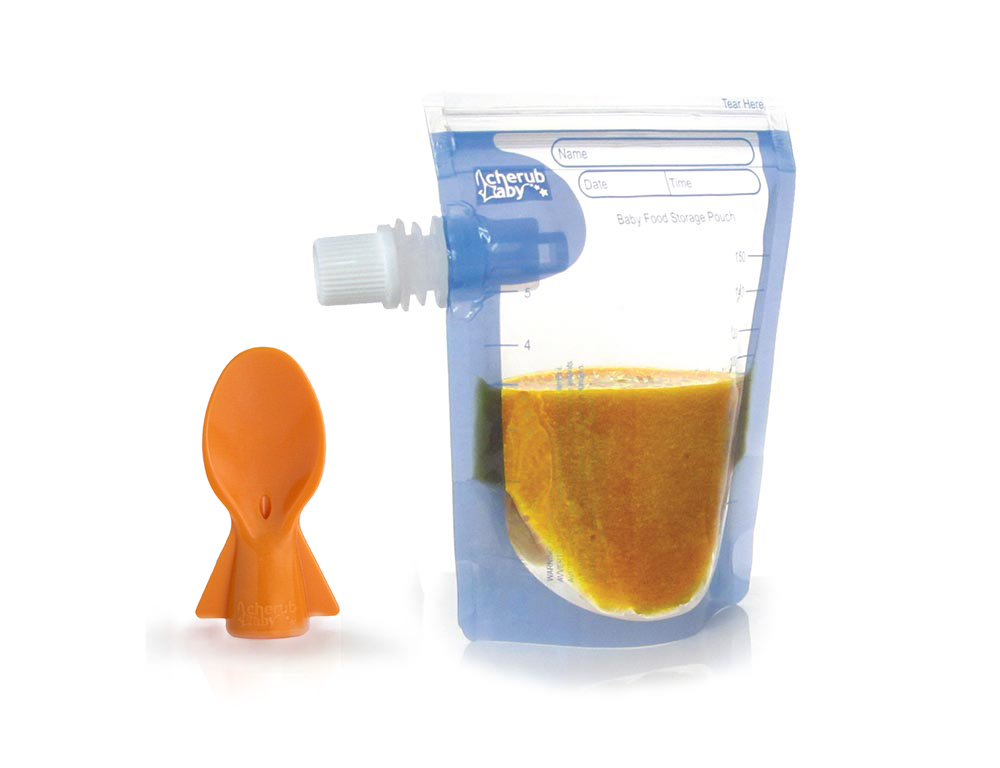 Frostbite is the result of excess air in a frozen bag that sinks onto food. Eliminate air pockets in bags to help stop frostbite.
Frostbite is the result of excess air in a frozen bag that sinks onto food. Eliminate air pockets in bags to help stop frostbite.
Can glass baby food freezer jars or baby food jars like Frutonyanya or Gerber be used? and also such banks are prone to rupture. Baby food jars are not manufactured for freezing or extreme heating. There are glass jars for freezing food in them, but they can be hard to find. Many people freeze in baby food jars, but I'm not a fan of this at all. After all, food is made for the baby because we want to give him the best healthy food; Do you really want to take the risk and freeze baby food in glass jars?
There are certain plastic jars that are specially made to withstand high temperatures and/or freezing. Therefore, it is best to use plastic containers or ordinary thick plastic bags, convenient and simple. There are also special freezer bags with a zip clip - an interesting option.
Can previously frozen breast milk or formula be used to make vegetable or fruit purees?
Do not use previously frozen breast milk to prepare puree to freeze this baby food.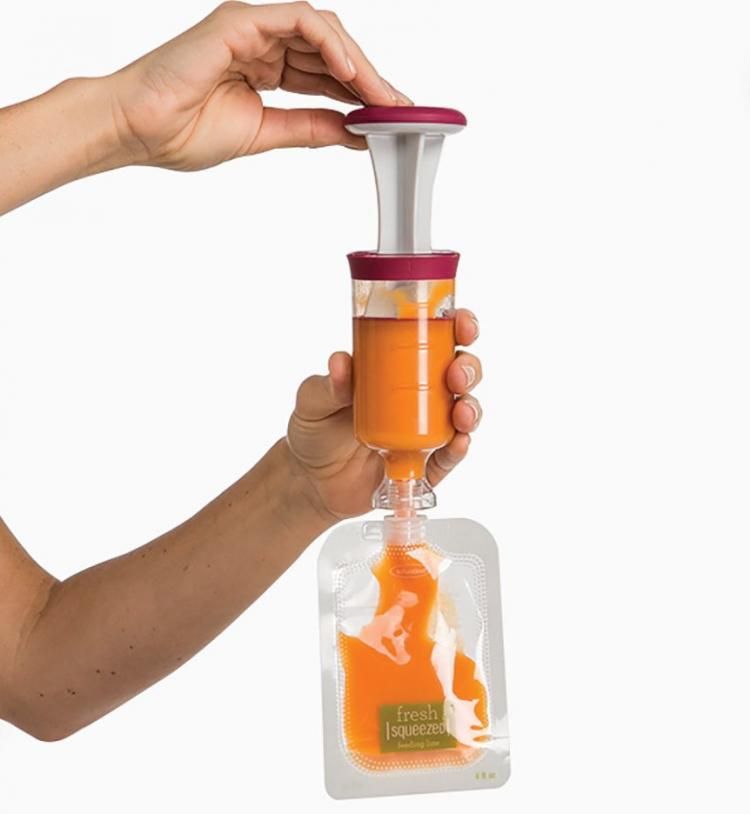
Breast milk must never be refrozen in any shape or form.
Milk formula
You can freeze puree to which defrosted milk formula has been added. However, formula should not be frozen in bottles or cans. It is impossible to add the mixture to the previously frozen mixture and freeze it. If frozen milk formula is used for mashing, then it is necessary to freeze it at a time without defrosting. Freezing milk formula causes separation of fats and liquids, and the texture suffers accordingly. Although there is no health risk, the same happens with breast milk and cow's milk, the texture and quality suffer a little. However, it is best to prepare the milk formula before putting it in the baby puree and only then freeze the puree. This will be more useful and efficient.
Some formula manufacturers say that freezing any formula is not recommended, as the process can alter physical properties such as fat separation, which can be difficult for sensitive babies to digest. Freezing does not affect the quality or food sterility, however it will not prolong the shelf life of formula. Freezing may result in the loss of the desired appearance and functionality and is therefore not recommended.
Freezing does not affect the quality or food sterility, however it will not prolong the shelf life of formula. Freezing may result in the loss of the desired appearance and functionality and is therefore not recommended.
It may be easier to freeze puree without adding any additional liquids. Since, when defrosted, they are most often liquid, so you have to add oatmeal or rice flakes.
We are not afraid and add me to VK and Odnoklassniki, Instagram!
Like this article? Subscribe to site updates
"Encyclopedia Baby Food"!
Don't forget to bookmark us! (CTRL+SHIFT+D) Subscribe to the site, comment, share in social networks.
On our site Encyclopedia Baby Food there is useful information on the nutrition of your children, which is useful for everyone, and we update the site "Encyclopedia Baby Food" constantly and try to search and write only excellent, verified and necessary information for you and your children.

Disclaimer No. 1: It must be understood that the author of the articles on the Baby Food Encyclopedia website is not a medical staff, “I am not a doctor.” The information I share is based on my own experience. My goal is not to teach you how to eat or feed your child, but to talk about how we did it, what new things I learned or read. This expands the picture of Baby Food knowledge, gives you a glimpse of the whole process so you can decide if you like it or not.
Disclaimer No. 2 : However, the above does not cancel visiting a pediatrician. Before you start complementary foods, you need to get his professional opinion on the best way to introduce new foods for your baby. I also draw your attention to the fact that you need to look at the original date of the published articles, because some of the "best practices" may have changed. Always check with your child's pediatrician about complementary foods and their health.
Disclaimer #3: Keep in mind that every family is unique, every situation is also completely unique.



